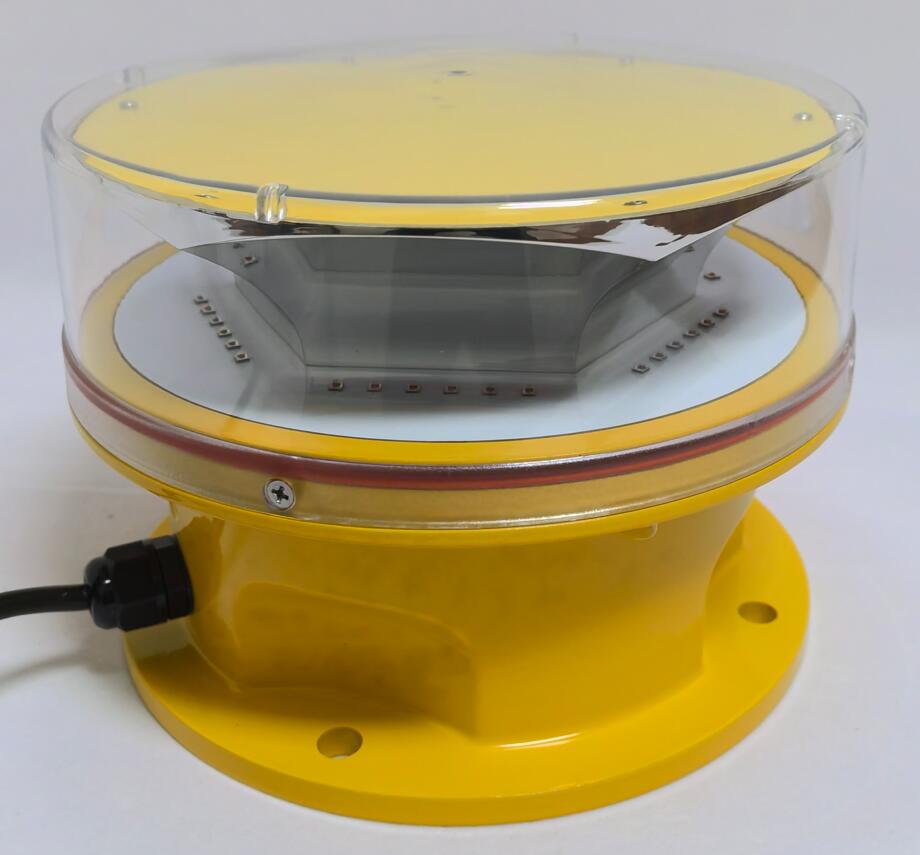Posted: 2025-03-04
In the realm of aviation and infrastructure, the role of an obstruction light manufacturer is indispensable. These manufacturers produce specialized lighting systems that mark tall structures, ensuring they are visible to aircraft and preventing potential collisions. As urbanization and air traffic continue to grow, the demand for reliable obstruction lights has never been higher. This article delves into the critical role of an obstruction light manufacturer, the technology behind their products, and their impact on global safety standards.
The Vital Role of an Obstruction Light Manufacturer
An obstruction light manufacturer is responsible for designing, producing, and supplying lights that mark tall structures such as skyscrapers, wind turbines, communication towers, and bridges. These lights are essential for aviation safety, helping pilots navigate around obstacles, especially during nighttime or low-visibility conditions.
Key Responsibilities of an Obstruction Light Manufacturer:
Innovation and Design: Manufacturers invest in research and development to create advanced lighting solutions that meet evolving industry needs.
Precision Engineering: Utilizing state-of-the-art technology and skilled craftsmanship to produce high-quality lights.

Regulatory Compliance: Ensuring products adhere to international safety standards set by organizations like the FAA (Federal Aviation Administration) and ICAO (International Civil Aviation Organization).
Custom Solutions: Offering tailored lighting systems to meet the specific requirements of different structures and environments.
The Technology Behind Obstruction Lights
Modern obstruction lights are sophisticated devices designed to perform reliably under challenging conditions. Here are some of the key technologies employed by leading manufacturers:
| obstruction light manufacturer |
| obstruction lights manufacturer |
LED Lighting: Light Emitting Diodes (LEDs) are widely used for their energy efficiency, long lifespan, and bright illumination.
Solar Power: Many obstruction lights now incorporate solar panels and rechargeable batteries, making them eco-friendly and ideal for remote locations.
Smart Sensors: Advanced models feature sensors that adjust brightness based on ambient light conditions, ensuring optimal visibility while conserving energy.
Durability: Obstruction lights are built to withstand harsh weather, including high winds, heavy rain, and extreme temperatures.
Compliance with Standards: Manufacturers ensure their products meet stringent international regulations, providing peace of mind to clients.
The Manufacturing Process at an Obstruction Light Manufacturer
The production of obstruction lights involves several meticulous steps to ensure quality and reliability:
Design and Prototyping: Engineers create designs based on client requirements and industry standards, followed by prototyping and testing.
Material Selection: High-quality materials, such as corrosion-resistant metals and durable plastics, are chosen for longevity and performance.
Assembly: Skilled workers assemble the lights, integrating components like LEDs, solar panels, and control systems.
Testing: Each light undergoes rigorous testing for brightness, durability, and compliance with safety standards.
Packaging and Distribution: Finished products are carefully packaged and shipped to clients worldwide.
Applications of Obstruction Lights
Obstruction lights are used in a variety of settings to enhance safety and visibility:
Aviation: Marking tall structures to prevent collisions with aircraft.
Wind Energy: Ensuring wind turbines are visible to low-flying planes and helicopters.
Telecommunications: Highlighting communication towers for safety and regulatory compliance.
Urban Infrastructure: Illuminating skyscrapers and bridges in densely populated areas.
Marine Environments: Marking offshore structures like oil rigs and lighthouses.
The Importance of Choosing a Reliable Obstruction Light Manufacturer
Selecting the right obstruction light manufacturer is crucial for ensuring the safety and reliability of these devices. Here’s why:
Quality Assurance: A reputable manufacturer adheres to strict quality control measures, ensuring every light meets industry standards.
Innovation: Leading manufacturers invest in R&D to develop advanced technologies and improve product performance.
Custom Solutions: Experienced manufacturers can design lights tailored to specific structures and environments.
Global Compliance: Trusted manufacturers ensure their products meet international safety regulations.
After-Sales Support: Reliable manufacturers offer maintenance, repair, and technical support services.
Innovations in Obstruction Light Manufacturing
The obstruction light industry is constantly evolving, with manufacturers introducing new technologies to enhance safety and efficiency:
Energy-Efficient Designs: Solar-powered and low-energy LED lights reduce environmental impact.
Smart Systems: Integration with IoT (Internet of Things) allows for remote monitoring and control.
Enhanced Durability: New materials and coatings improve resistance to corrosion and weathering.
Compact Designs: Smaller, lighter lights are easier to install and maintain.
Lighting the Way to a Safer Future
An obstruction light manufacturer is more than just a producer of lighting systems—it’s a guardian of safety in the skies and beyond. By creating high-quality obstruction lights, these manufacturers play a vital role in protecting lives, property, and infrastructure. Whether marking a skyscraper in a bustling city or a wind turbine in a remote location, obstruction lights are essential for ensuring visibility and preventing accidents.
As technology continues to advance, obstruction light manufacturers will remain at the forefront of safety solutions, crafting products that meet the demands of an ever-changing world. By choosing a reliable manufacturer, you’re not just purchasing a product; you’re investing in a safer, brighter future for all.